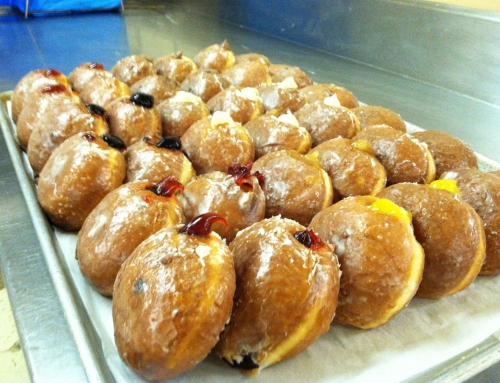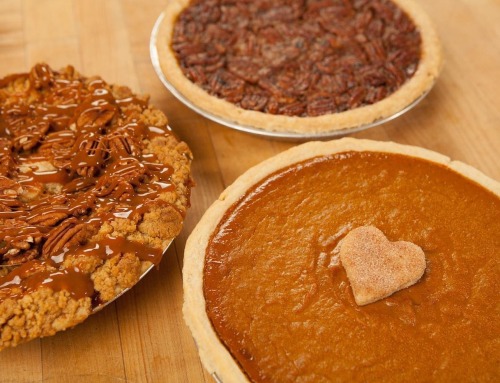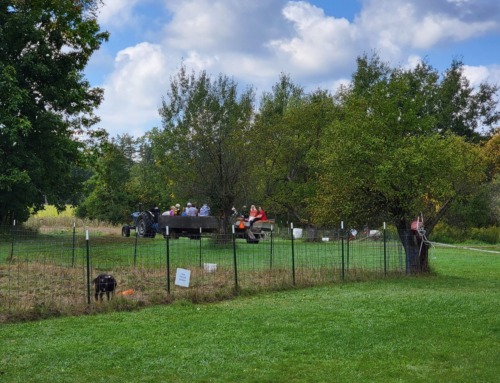If they’re grown in the summer and sold in the fall, why are so many fruits (yes, they are fruits not veggies) considered to be winter squash? Pumpkins, buttercup, butternut, acorn, and spaghetti squash are all part of this family, which is harvested and eaten in the mature fruit stage, meaning the seeds have matured fully and the skin has hardened into a tough rind. At this stage, most varieties of this fruit can be stored for use during the winter, making it an aptly named category after all.
At this time of year winter squash becomes readily available in farmers markets and stores, with good reason. In 2011 alone, Michigan generated $16.8 million from production of 98.6 million pounds of pumpkins, and produced 122 million pounds of squash for fresh or processed use, totaling $25.5 million.
Acorn squash, also called pepper squash, has distinctive longitudinal ridges and sweet, yellow-orange flesh. The most common variety is dark green in color, often with a single splotch of orange on the side or top
Nutrition: It is a good source of Dietary Fiber, Vitamin A, Vitamin B6, Folate and Magnesium, and a very good source of Vitamin C, Thiamin, Potassium and Manganese.
Uses: Acorn squash is most commonly baked, but can also be microwaved, sautéed or steamed. It may be stuffed with rice, meat or vegetable mixtures. The seeds of the may also be eaten, usually after being toasted.
Buttercup squash, also known as Kobocha, has a turban shape (a flattish top and dark green skin), weighing three to five pounds, and normally heavy with dense, yellow-orange flesh.
Nutrition: It is a good source of Vitamin E (Alpha Tocopherol), Thiamin, Niacin, Vitamin B6, Folate, Calcium and Magnesium, and a very good source of Vitamin A, Vitamin C, Potassium and Manganese.
Uses: can be roasted, baked, and mashed into soups, among a variety of filler uses, much like pumpkin. It is extremely popular, especially as a soup.
Butternut squash has yellow skin and orange fleshy pulp. When ripe, it turns increasingly deep orange, and becomes sweeter and richer.
Nutrition: It is a good source of Dietary Fiber, Vitamin E (Alpha Tocopherol), Thiamin, Niacin, Vitamin B6, Folate, Calcium and Magnesium, and a very good source of Vitamin A, Vitamin C, Potassium and Manganese.
Uses: Butternut squash is a fruit that can be roasted, toasted, puréed for soups, or mashed and used in casseroles, breads, and muffins. It is often substituted for pumpkin.
Hubbard squash has a tear-drop shape and is rather unusual looking, commonly with bluish-grey or green skin, but can also be golden.
Nutrition: It is a good source of Thiamin, Vitamin B6 and Magnesium, and a very good source of Vitamin A, Vitamin C, Potassium and Manganese.
Uses: Prepare it simply by roasting it and topping it with butter and brown sugar or maple syrup, or experiment by using it in dishes such as soup, stew or pie.
Pumpkins are round, with smooth, slightly ribbed skin and typically have deep yellow to orange coloration. White versions are now becoming increasingly popular as well.
Nutrition: It is a good source of Thiamin, Niacin, Vitamin B6, Folate, Pantothenic Acid, Iron, Magnesium and Phosphorus, and a very good source of Vitamin A, Vitamin C, Vitamin E (Alpha Tocopherol), Riboflavin, Potassium, Copper and Manganese.
Uses: While most commonly thought of for Halloween décor, pumpkins are very versatile in their uses for cooking. Most parts of the pumpkin are edible, including the fleshy shell, the seeds, the leaves, and even the flowers. When ripe, the pumpkin can be boiled, baked, steamed, or roasted, and makes a great soup.
Spaghetti squash is an oblong seed-bearing variety of winter squash. The fruit can range either from ivory to yellow or orange in color. Its flesh is bright yellow or orange.
Nutrition: It is a good source of Vitamin C, Niacin, Vitamin B6, Pantothenic Acid and Manganese.
Uses: Spaghetti squash can be baked, boiled, steamed, and/or microwaved. When raw, the flesh is solid and similar to other raw squash; when cooked, the flesh falls away from the fruit in ribbons or strands like spaghetti, hence the name. It can be served with or without sauce, as a substitute for pasta. The seeds can also be roasted, similar to pumpkin seeds.
Store winter squash in a cool (45 to 50 degree) dry place, and do not wash squash them before storing. Stored properly, most varieties will keep for several months.







Leave A Comment
You must be logged in to post a comment.